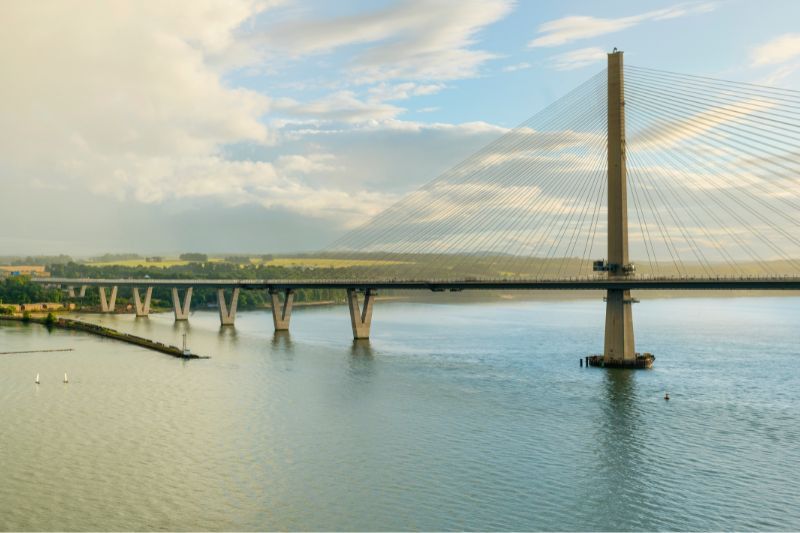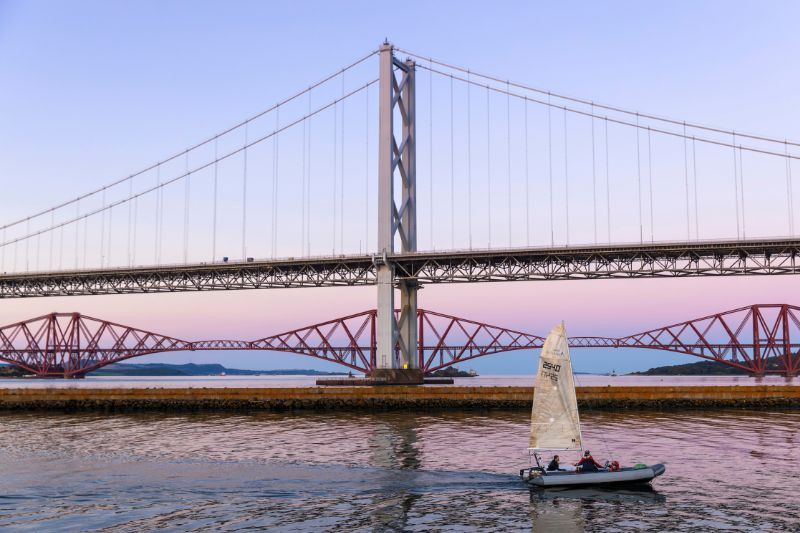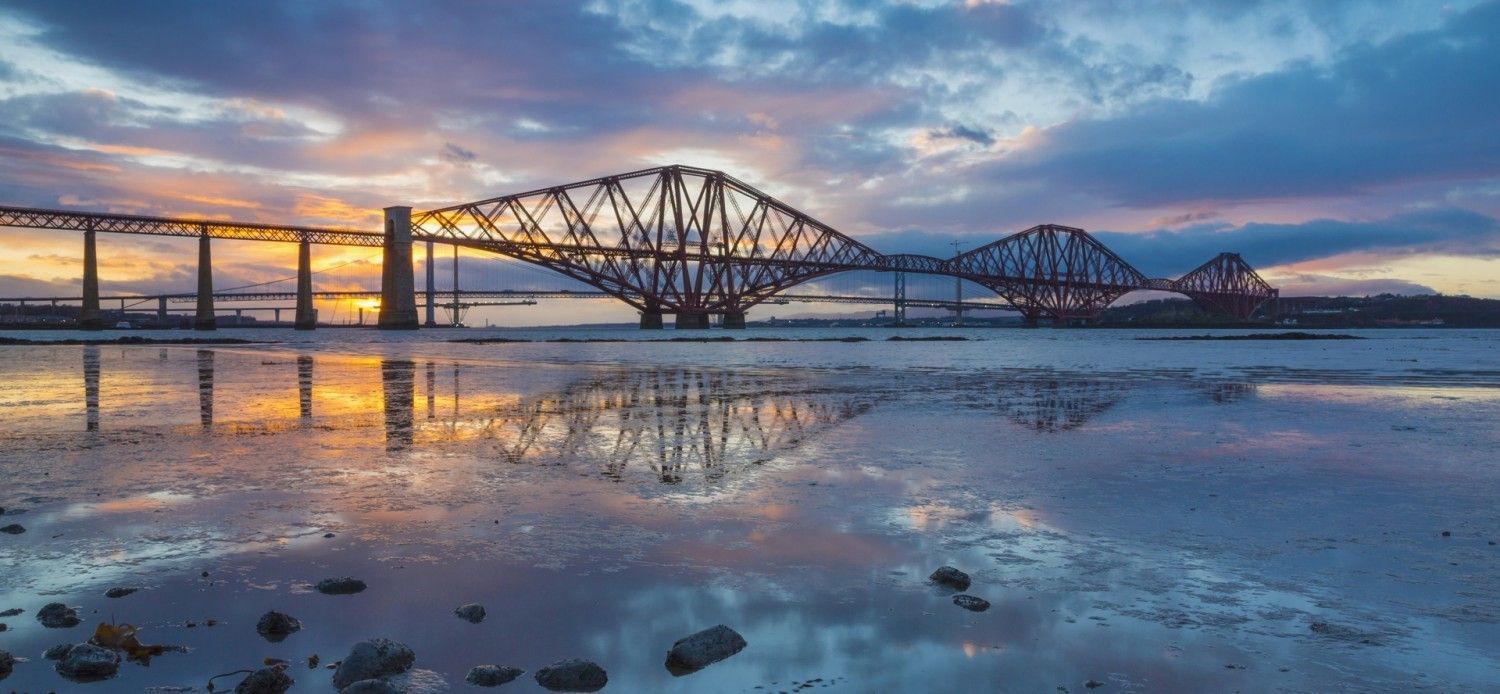Separating the capital city of Edinburgh from Fife and the north of Scotland, the Firth of Forth estuary has been crossed by various methods throughout Scotland’s history. Records show that a regular ferry carried passengers across the Forth as far back as the 12th century. This service remained in place up until 1964, more than 800 years!
The Queensferry Crossing is the newest bridge to stretch across the estuary and is Scotland’s largest infrastructure project in a generation. The beautifully crafted bridge stands alongside its neighbours, the Forth Road Bridge and the Forth Rail Bridge with all three respectively demonstrating incredible feats of engineering from the 19th, 20th and 21st centuries.
Each of these bridges has been celebrated for their impressive design and creation, and all three stand as an excellent example of Scotland’s long and proud history of pioneering civil engineering.
The Queensferry Crossing

The Queensferry Crossing opened to traffic on 30 August 2017 and was constructed to carry more than 24 million vehicles a year. The main purpose behind the bridge’s creation was to ease the pressure on the Forth Road Bridge. Stretching 1.7 miles (2.7 km), the Crossing is the longest three-tower, cable-stayed bridge in the world.
Its innovative design incorporates crossed cables near the centre of the two main spans. This arrangement provides extra strength and rigidity without compromising the elegant beauty of the overall structure. Amazingly, the cables that make up the new bridge can be individually removed and replaced without compromising the stability of the bridge.
The Queensferry Crossing’s three towers were purposely designed to complement its iconic Victorian sibling, the Forth Rail Bridge. The design of the bridge was also chosen to make it incredibly easy to maintain, ensuring that it will last for well over 100 years. Like its two predecessors, the Queensferry Crossing will remain as a monument to Scottish ingenuity and engineering for many years to come.
The Forth Road Bridge

The Forth Road Bridge, which was opened to traffic on 4 September 1964, is a classic suspension bridge characterised by a distinctive “St Andrew’s Cross” bracing that mirrors the Scottish flag. At the time of its construction, it was the fourth longest bridge of its kind in the world and the longest outside of the USA.
With the opening of the Queensferry Crossing in 2017, the Forth Road Bridge is now exclusively used by pedestrians, cyclists, emergency services and public transport.
The need for a road bridge across the Firth of Forth estuary began to come to light in the 1920s with the ever-increasing popularity of the car. However, both the Great Depression and the outbreak of World War II put a halt to all progress until 1947. An incredible 30,000 miles of steel wires were spun together to create the bridge’s main cables. This was done using an innovative new method that had previously never been used anywhere in Europe and required a special training school to be set up on site.
The Forth Rail Bridge

The oldest of the three bridges, The Forth Bridge was officially opened on 4 March 1890. It is undoubtedly one of Scotland’s most well-known sights – an iconic marvel, which is known across the world. In July of 2015, the bridge was inscribed as a UNESCO World Heritage site. Today it now shares the same status as India’s Taj Mahal and the Great Wall of China.
When it was constructed, the Forth Bridge had the longest single cantilever bridge span in the world. Over 125 years later, it is only surpassed by Canada’s Quebec Bridge. Painted a deep rust red that helps it stand out from the crowd, the Forth Bridge has featured in Hollywood movies including Alfred Hitchcock’s The 39 Steps.
The term ‘Painting the Forth Bridge’ was a famous expression in Scotland for a never-ending task, as it was believed that the bridge took so long to paint that when you got to the end, you had to start again. However, this amusing expression is incorrect, and in 2011 the bridge received a fresh coat of paint that is expected to last up to 25 years.
The Forth Bridges
Iconic, historic and dynamic, Scotland’s Forth Bridges are a wonder of the modern world. Towering side-by-side over the Firth of Forth, these structures represent the pinnacle of engineering from three centuries.
Learn more about Scotland's Forth Bridges (theforthbridges.org)
Photo credits: VisitScotland/Kenny Lam